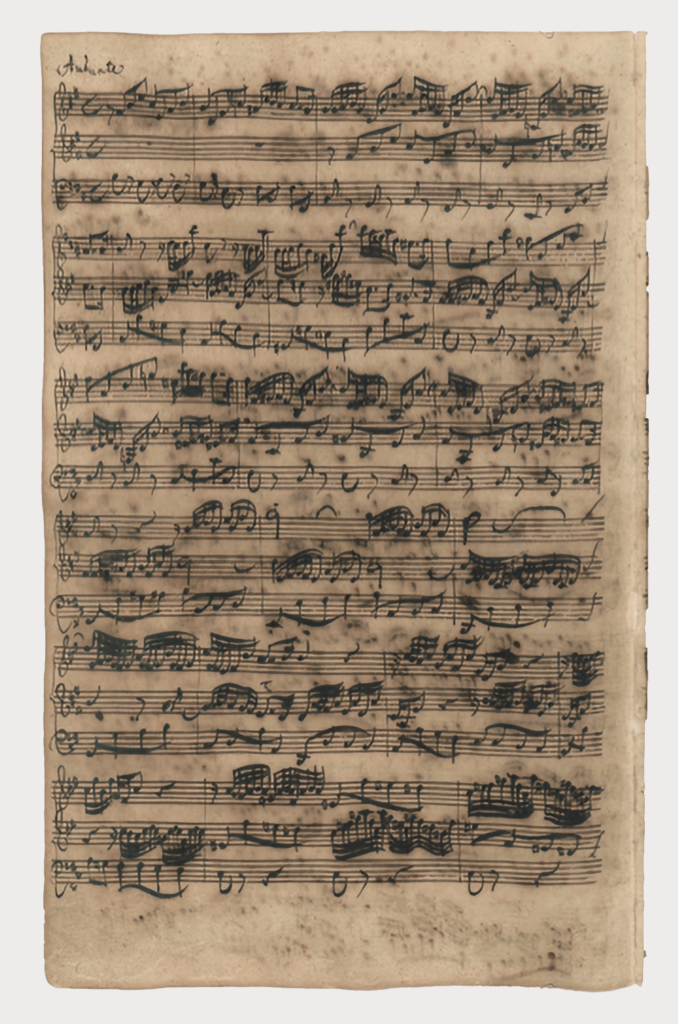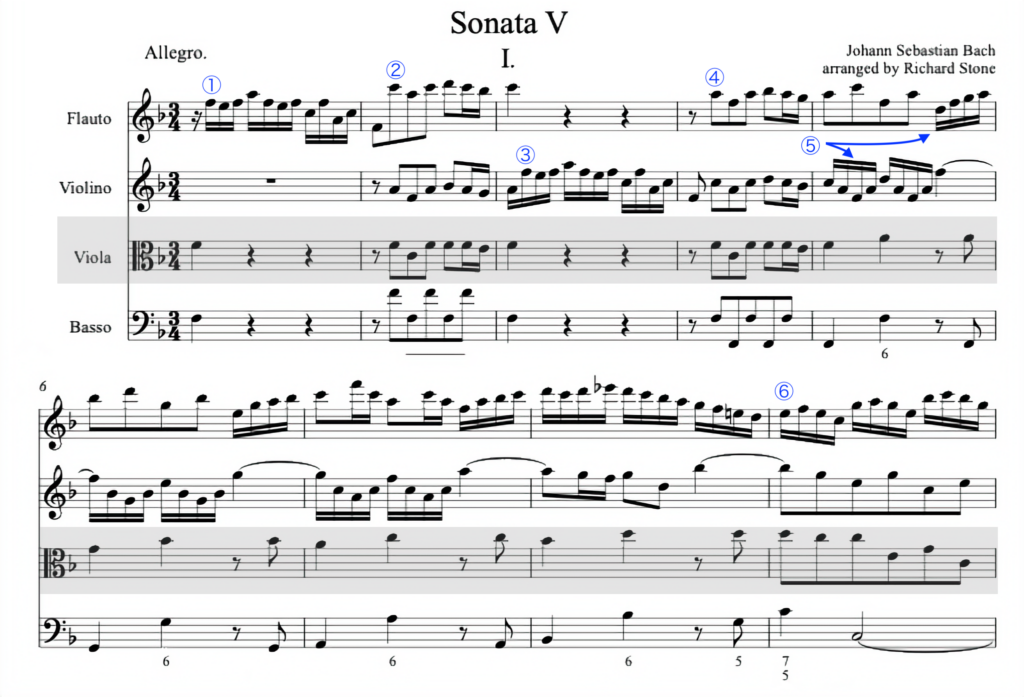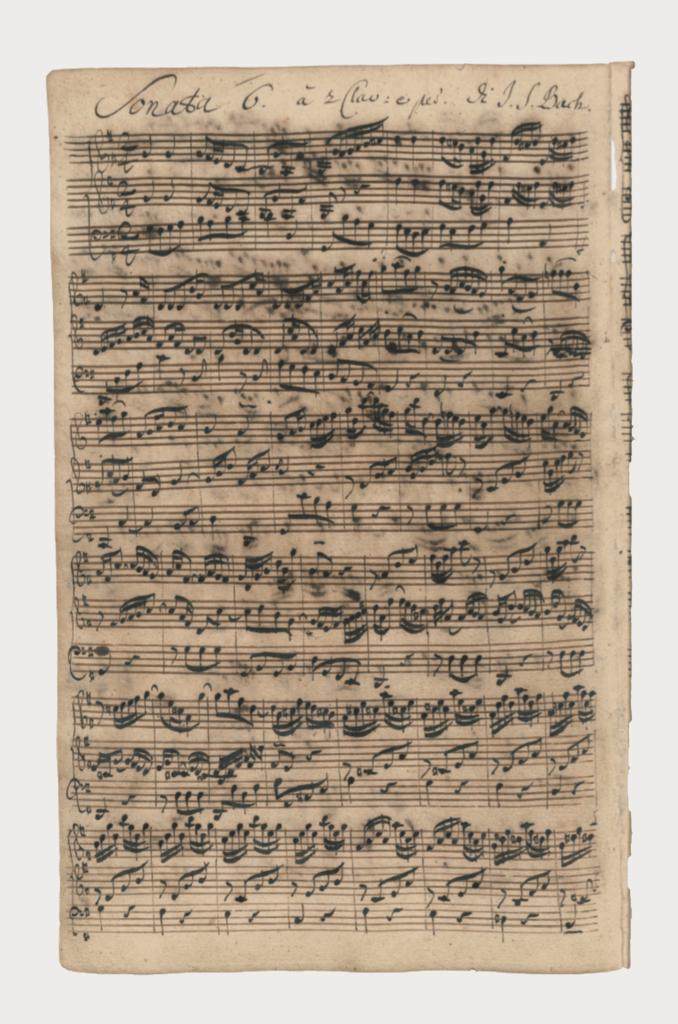
Part 3: Sonatas 4-6
The first movement of Sonata 4, BWV 528, survives as an ensemble piece in the opening of Cantata 76, set for oboe d’amore and viola da gamba with basso continuo. We have included an audio sample mainly because the sound is so unusual. But it’s also striking how much Bach sounds like François Couperin in the slow opening!
Its middle movement also has an earlier version, also for organ. Some scholars believe that the whole of Sonata 4 represents a now-lost chamber trio sonata from Bach’s Weimar period, 1708–1717.

More than any of the other five works in the set, none of this sonata’s movements require melody instruments that sustain, which allows it to fall handily to plucked string instruments, whose sound decays quickly. Its performance as a duet for lute, plucked with bare fingers, and harpsichord, plucked with a mechanical action, lends an extra degree of transparency to the composition specifically because of their fleeting sustain. In our version, the harpsichord plays the upper melody line and bass; the lute plays the middle line and bass. The bass part is is treated as a blend of reinforcing the line for each other, which maintains a three-voice texture, and splitting off into complementary, independent bass lines, which brings passages in a four-voice texture. Duets for “perfect” instruments—those capable of playing simultaneous treble and bass—typically fluctuate between thinner and denser contrapuntal textures.
We took a different approach by reimagining the last two sonatas as expanded contrapuntal textures, transforming from the organ’s three independent, composed voices to four. We wanted to be able to bookend the program with a pair of pieces that used all the performers. Compositionally, such a transformation is a straightforward operation, since most of Bach’s instrumental music in 4 or more voices places 2 of the upper parts in a co-primary role and the third upper part in a mainly supporting role.
Sonata 5, BWV 529 has the feel of a dialogue among two principals and a commenting chorus. Principal 1 calls out an idea; the chorus responds; principal 2 confirms or contrasts the first idea; chorus responds. When the two principals seem to be playing fast together, one of them is in fact almost always rhythmically slower than the other, an approach that embodies the Enlightenment ideal of elevated conversation.


The outer fast movements of Sonata 6, BWV 530, have all the structural indicators of a baroque concerto. The first in particular falls into clear soloist/accompaniment passages. We have run with the concerto idea for the whole sonata for this orchestration and derived a soloist—for us a flautino (soprano recorder)—from the soloistic passagework, regardless of which manual it came from in the organ sonata. All the introductory and accompanimental figuration moved to “orchestra”, a pair of violins, cello and continuo. We also followed the kinds of procedures that Bach uses for slow movements of other concertos here.

While the accompaniment ensembles for Bach’s surviving concerti consist of 2 violins, viola and bass, there are also plenty of concerti scored by his contempories for the forces we’re using here, Alessandro Scarlatti and Antonio Vivaldi to name a notable two. And though we recorded this piece that way, we have also performed it in a version that includes a viola—for a total of five voices—which works great too, as you’ll see in the video excerpt from our 2022 twentieth-anniversary season.
